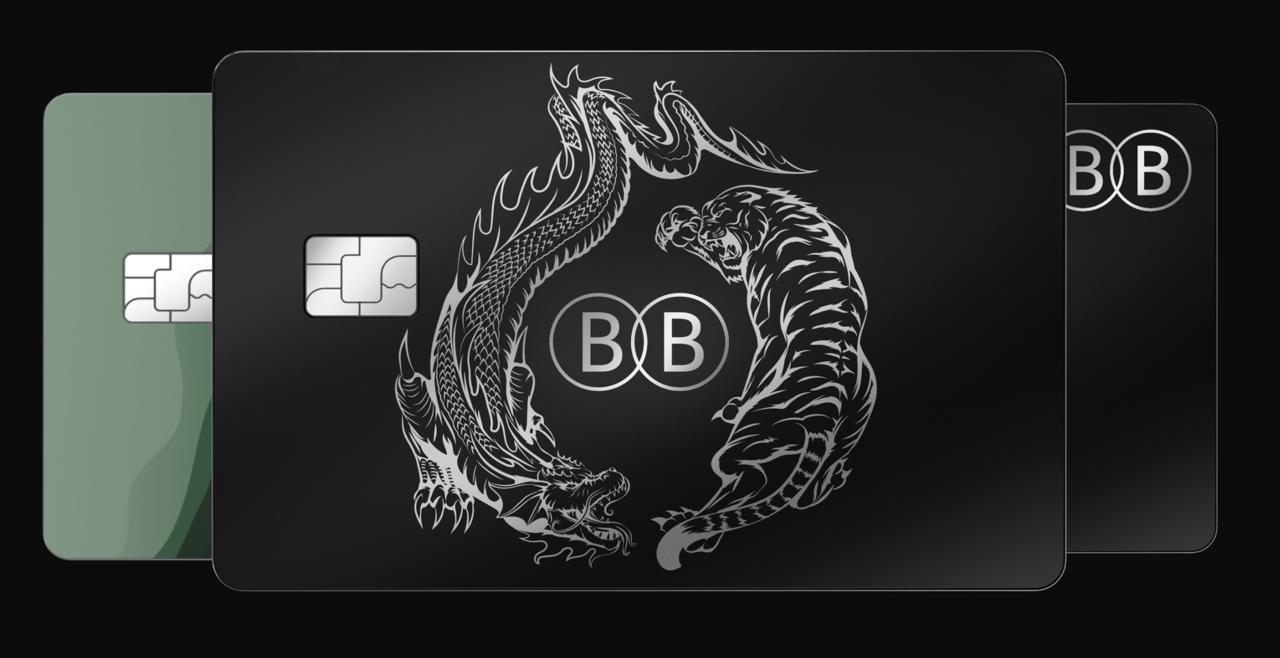Business
7 Tips for Creating a Professional Employee Handbook

An employee handbook might seem like a small detail in the grand scheme of running a business, but it can have a major impact on your business’s inner workings. From processes and execution to employee confidence and consistency, a good handbook has the potential to change everything.
Why Create an Employee Handbook?
As a small business owner, you have to be intentional about what you spend your time on – otherwise, you risk being pulled in a dozen different directions.
So at first glance, it might be tempting to write-off an employee handbook as proverbial “busy work,” but we’d implore you to give it a second thought. Doing so could provide your growing company with a wealth of ongoing value.
As The Hartford explains, “An employee handbook is a compilation of all your company’s policies and protocols, as well as employees’ legal rights and obligations. Having an employee handbook makes it easy for you to communicate rules and responsibilities to employees, so there’s no question about what’s expected from them — or from you, as the small business owner.”
An employee handbook is an easy and convenient point of reference. It empowers your team and helps them address issues in real-time without having to involve other people and take them away from the work they’re doing.
7 Tips for Better Employee Handbooks
If you’re going to go through the effort of creating a handbook, you need to ensure it’s useful. A poorly executed employee handbook can do more harm than good, inciting confusion and feeling overwhelmed.
With that said, here are a few tips you may find helpful:
- Make it Accessible
The problem with most employee handbooks is that they’re inaccessible. When an employee has a situation where they need the handbook, they don’t know where to find it. This causes the employee to either ignore it or send an email to HR (which hurts productivity and defeats the entire purpose of having a handbook in the first place).
In order to get the maximum value out of your handbook, you should invest in both digital and print copies. Digital copies can be stored on your company’s cloud drive or social intranet. Print copies can be printed on-demand and given to employees as part of their initial hiring package. (We recommend using spiral bound book printing to get the perfect blend of cost, durability, and looks.)
- Keep it Engaging
A good employee handbook should be compelling enough to keep people engaged. You can do this through a combination of high-quality visuals, storytelling, and interactive elements (such as checklists).
- Include the Basics
The beginning of the employee handbook should provide a one-page rundown of the company’s values, mission statement, and other basic elements like taglines and elevator pitch statements. Every employee should be required to memorize this page within the first month of being employed.
- Address FAQs
An employee handbook should be more than an endless stream of policies and legal language. You want this to be a resource that employees can turn to in order to get answers to all common questions regarding processes and standard operating procedures. By centralizing your knowledge into a single resource, you cut down on the confusion people have with where to go. This trains them to visit the employee handbook first. Then, and only then, should they bring someone else into the issue or question they’re working through.
- Explain Feedback Loops
While a handbook can cut down on 75 to 90 percent of questions employees have, even the most thorough resource can’t solve every problem. However, a good employee handbook can provide information on the proper feedback loops and chains of command so that employees know where to go with their inquiries.
- Include Disclaimers
Finally, any good employee handbook must include disclaimers and other caveats pertaining to employment law and company policies. (This is as much about educating employees as it is about protecting yourself. Should an issue arise, the fact that you have well-documented disclaimers will show a good faith effort to educate.)
Consider including disclaimers as they relate to anti-discrimination and anti-harassment laws, family and medical leave policies, equal opportunity policies, etc.
- Well-Organized
An employee handbook is not something that one of your team members is going to read from cover to cover – it’s a resource. When it comes to designing your handbook, be sure to include a clear table of contents and a reference section. This empowers employees to find what they’re looking for in a matter of seconds.
Empower Your Team to Succeed
An employee handbook won’t solve all of your problems or replace the need for training and development, but it does provide a centralized resource that empowers your team to be more productive. If you haven’t already, now’s the time to create a handbook for your team!
Business
High Volume, High Value: The Business Logic Behind Black Banx’s Growth

In fintech, success no longer hinges on legacy prestige or brick-and-mortar branches—it’s about speed, scale, and precision. Black Banx, under the leadership of founder and CEO Michael Gastauer, has exemplified this model, turning its high-volume approach into high-value results.
The company’s Q1 2025 performance tells the story: $1.6 billion in pre-tax profit, $4.3 billion in revenue, and 9 million new customers added, bringing its total customer base to 78 million across 180+ countries.
But behind the numbers lies a carefully calibrated business model built for exponential growth. Here’s how Black Banx’s strategy of scale is redefining what profitable banking looks like in the digital age.
Scaling at Speed: Why Volume Matters
Unlike traditional banks, which often focus on deepening relationships with a limited set of customers, Black Banx thrives on breadth and transactional frequency. Its digital infrastructure supports onboarding millions of users instantly, with zero physical presence required. Customers can open accounts within minutes and transact across 28 fiat currencies and 2 cryptocurrencies (Bitcoin and Ethereum) from anywhere in the world.
Each customer interaction—whether it’s a cross-border transfer, crypto exchange, or FX transaction—feeds directly into Black Banx’s revenue engine. At scale, these micro-interactions yield macro results.
Real-Time, Global Payments at the Core
One of Black Banx’s most powerful value propositions is real-time cross-border payments. By enabling instant fund transfers across currencies and countries, the platform removes the frictions associated with SWIFT-based systems and legacy banking networks.
This service, used by individuals and businesses alike, generates:
- Volume-based revenue from transaction fees
- Exchange spreads on currency conversion
- Premium service income from business clients managing international payroll or vendor payments
With operations in underserved regions like Africa, South Asia, and Latin America, Black Banx is not only increasing volume—it’s tapping into fast-growing financial ecosystems overlooked by legacy banks.
The Flywheel Effect of Crypto Integration
Crypto capabilities have added another dimension to the company’s high-volume model. As of Q1 2025, 20% of all Black Banx transactions involved cryptocurrency, including:
- Crypto-to-fiat and fiat-to-crypto exchanges
- Crypto deposits and withdrawals
- Payments using Bitcoin or Ethereum
The crypto integration attracts both retail users and blockchain-native businesses, enabling them to:
- Access traditional banking rails
- Convert assets seamlessly
- Operate with lower transaction fees than those found in standard financial systems
By being one of the few regulated platforms offering full banking and crypto support, Black Banx is monetizing the convergence of two financial worlds.
Optimized for Operational Efficiency
High volume is only profitable when costs are contained—and Black Banx has engineered its operations to be lean from day one. With a cost-to-income ratio of just 63% in Q1 2025, it operates significantly more efficiently than most global banks.
Key enablers of this cost efficiency include:
- AI-driven compliance and customer support
- Cloud-native architecture
- Automated onboarding and KYC processes
- Digital-only servicing without expensive physical infrastructure
The outcome is a platform that not only scales, but does so without sacrificing margin—each new customer contributes to profit rather than diluting it.
Business Clients: The Value Multiplier
While Black Banx’s massive customer base is largely consumer-driven, its business clients are high-value accelerators. From SMEs and startups to crypto firms and global freelancers, businesses use Black Banx for:
- International transactions
- Multi-currency payroll
- Crypto-fiat settlements
- Supplier payments and invoicing
These clients tend to:
- Transact more frequently
- Use a broader range of services
- Generate significantly higher revenue per user
Moreover, Black Banx’s API integrations and tailored enterprise solutions lock in these clients for the long term, reinforcing predictable and scalable growth.
Monetizing the Ecosystem, Not Just the Account
The genius of Black Banx’s model is that it monetizes not just accounts, but entire customer journeys. A user might:
- Onboard in minutes
- Deposit funds from a crypto wallet
- Exchange currencies
- Pay an overseas vendor
- Withdraw to a local bank account
Each of these actions touches a different monetization lever—FX spread, transaction fee, crypto conversion, or premium service charge. With 78 million customers doing variations of this at global scale, the cumulative financial impact becomes immense.
Strategic Expansion, Not Blind Growth
Unlike many fintechs that chase customer acquisition without a clear monetization path, Black Banx aligns its growth with strategic market opportunities. Its expansion into underbanked and high-demand markets ensures that:
- Customer acquisition costs stay low
- Services meet genuine needs (e.g., cross-border income, crypto access)
- Revenue per user grows over time
It’s not just about acquiring more customers—it’s about acquiring the right customers, in the right markets, with the right needs.
The Future Belongs to Scalable Banking
Black Banx’s ability to transform high-volume engagement into high-value profitability is more than just a fintech success—it’s a signal of what the future of banking looks like. In a world where agility, efficiency, and inclusion define competitive advantage, Black Banx has created a blueprint for digital banking dominance.
With $1.6 billion in quarterly profit, nearly 80 million users, and services that span the globe and the blockchain, the company is no longer just scaling—it’s compounding. Each new user, each transaction, and each feature builds upon the last.
This is not the story of a bank growing.
This is the story of a bank accelerating.
-

 Tech4 years ago
Tech4 years agoEffuel Reviews (2021) – Effuel ECO OBD2 Saves Fuel, and Reduce Gas Cost? Effuel Customer Reviews
-

 Tech6 years ago
Tech6 years agoBosch Power Tools India Launches ‘Cordless Matlab Bosch’ Campaign to Demonstrate the Power of Cordless
-

 Lifestyle6 years ago
Lifestyle6 years agoCatholic Cases App brings Church’s Moral Teachings to Androids and iPhones
-

 Lifestyle4 years ago
Lifestyle4 years agoEast Side Hype x Billionaire Boys Club. Hottest New Streetwear Releases in Utah.
-

 Tech7 years ago
Tech7 years agoCloud Buyers & Investors to Profit in the Future
-

 Lifestyle5 years ago
Lifestyle5 years agoThe Midas of Cosmetic Dermatology: Dr. Simon Ourian
-

 Health6 years ago
Health6 years agoCBDistillery Review: Is it a scam?
-

 Entertainment6 years ago
Entertainment6 years agoAvengers Endgame now Available on 123Movies for Download & Streaming for Free
